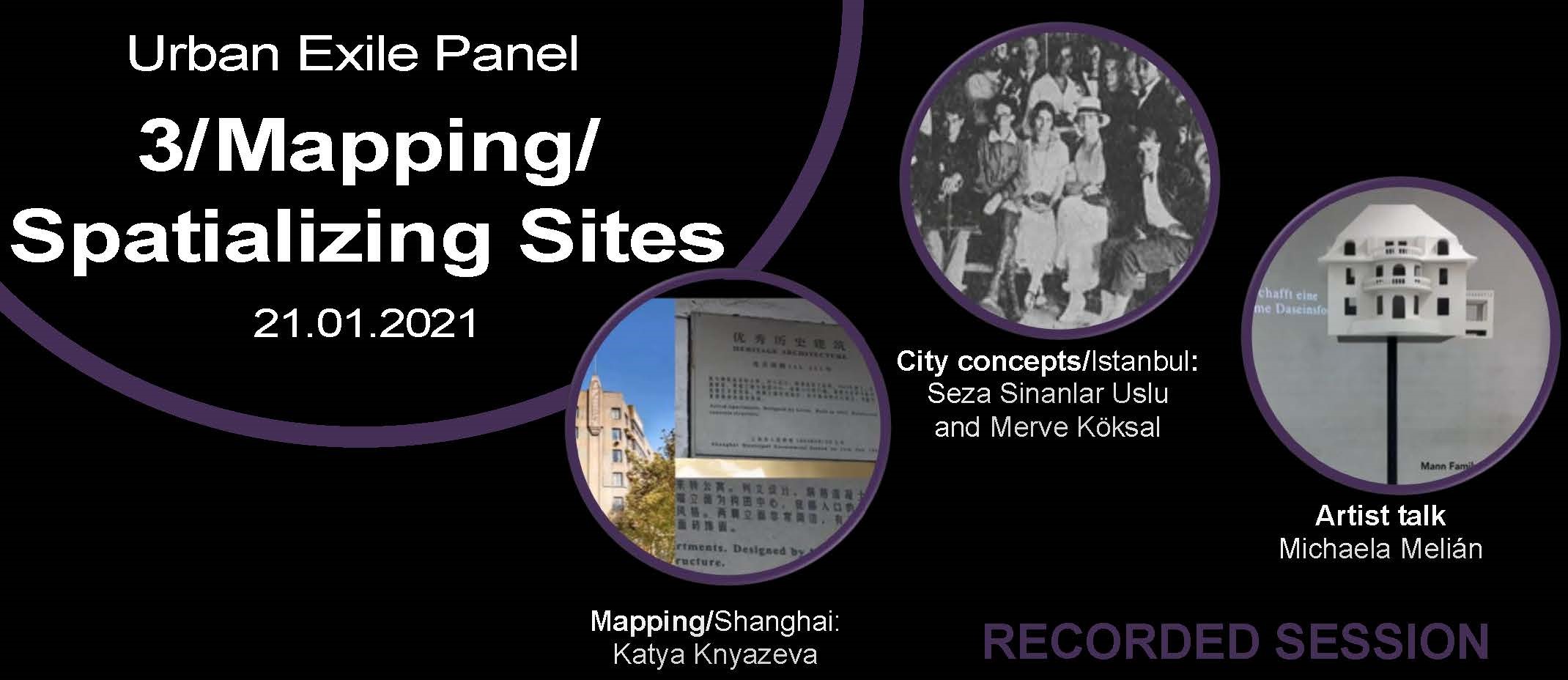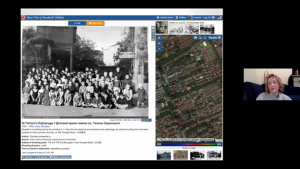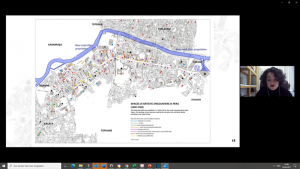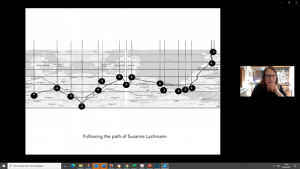Urban Exile Panel 3: “Mapping/ Spatializing Sites” recording of 21.01.2021
The panel “Mapping/ Spatializing Sites” took place as a kick-off for a transnational and transdisciplinary discourse on the occasion of METROMOD’s second book “Urban Exile”.

On the panel series “Urban Exile”
The panel series “Urban Exile” took place as a kick-off for a transnational and transdisciplinary discourse on the occasion of METROMOD’s forthcoming book “Urban Exile”.
The series followed the question, how historical exile, flight and migration could be examined under a glocal, urbanistic perspective? Each session included two research lectures from the book’s authors as well as one talk of a contemporary artist dealing with exile.
Against this extended horizon of thinking the public panel series “Urban Exile” contributed to the theory and methods of research on exile, cities and modernities. By choosing the term exile as a central category for methodological investigations of urban culture, we aimed to rethink its application in a transcultural, global context. Although it is widely accepted that migration shapes cities, until now, exile research has rarely been written from an urban perspective.
The online panels focused on dislocations in the first half of the 20th century. Back then modern movements constituted themselves in global exchange. In cities around the world e/migration transformed urban spaces by forming new communities as well as cultural zones. Experiences of exile by locals and migrants alike shaped the intertwining of urbanity and creative practices.
Panel 3: Mapping/ Spatializing Sites (Moderation: Mareike Hetschold & Mareike Schwarz)
Panel three of the public panel series “Urban Exile” on 21 January 2021 dealt with strategies to map and spatialize sites. Through the comparative perspective the benefits and challenges of reflecting on exile by means of spatial methods were discussed. Further guiding questions have been, how territorial movements intertwine with in- and exclusion mechanisms in the cases of the cities of Shanghai, Istanbul and Hamburg amongst others?
Katya Knyazeva from the Department of Humanities at the University of Eastern Piedmont began the panel “Mapping/ Spatializing Sites” with a talk on the Russian diaspora in Shanghai. She outlined the necessity of a spatially informed historiography, which in line with Philip J. Ethington cannot exist in time but in space. As part of her projects “PastVu” (http://pastvu.com) or “Building Russian in Shanghai” (https://sites.google.com/view/russianshanghai/) the localizations of historic architectures showed how marginalised histories of Russian emigrants become visible again through a variety of cross-references, which „sometimes appear to be a shortcut to some knowledge“.
The second talk was held by the design researcher Merve Köksal from Akdeniz University and the art historian Seza Sinanlar Uslu from Yildiz Technical University. They focused on the contact zones within Istanbul’s Pera district from 1840 to 1960, where multifaceted contacts between local and migrant artists took place. By mapping places such as artists’ studios or embassies over the course of time Pera unfolded as a migratory site of artistic encounter.
The third speaker of the panel, the visual artist and musician Michaela Melián, gave an insightful overview of her artistic work in relation to exile. Her spatial methods range from the mapping of multi-layered personal histories in the city space in her public art piece “Memory Loops” (2010) to artistically tracing the route of the musician Susanne Lachmann, who needed to flee from National Socialism due to her Jewish descent. In her sound installation “Movement” (2020) Michaela Melián transforms the passage of the exiled artist into a musical pathway, that can be experienced despite the loss of most of Lachmann’s artistic pieces.
During the panel discussion translational issues of archival material, found footage or on-site research into spatial visualizations and materialization were discussed. The panellists addressed the challenges of making forgotten or marginalized (hi)stories visible. For example, the crowding out of female cultural heritage could be seen both in the cases of Shanghai and Lachmann. Taking these exclusions from exile histories into account, spatial methods are capable to convey disparate information. It can also compensate for the tendency of historiography towards a linear progression of time. However, the constant changes of cities also make spatial access difficult, as addresses can often no longer be reconstructed. Together with the audience a fruitful dialogue on the relation of time and space developed, which is much more disordered than it is implied by the often under-complex structured narrations. Mapping and its various and creative approaches can be a helpful opportunity to encounter and visualize fragmented histories.
Images: Courtesy of the speakers; Text and moderation by Mareike Hetschold & Mareike Schwarz





